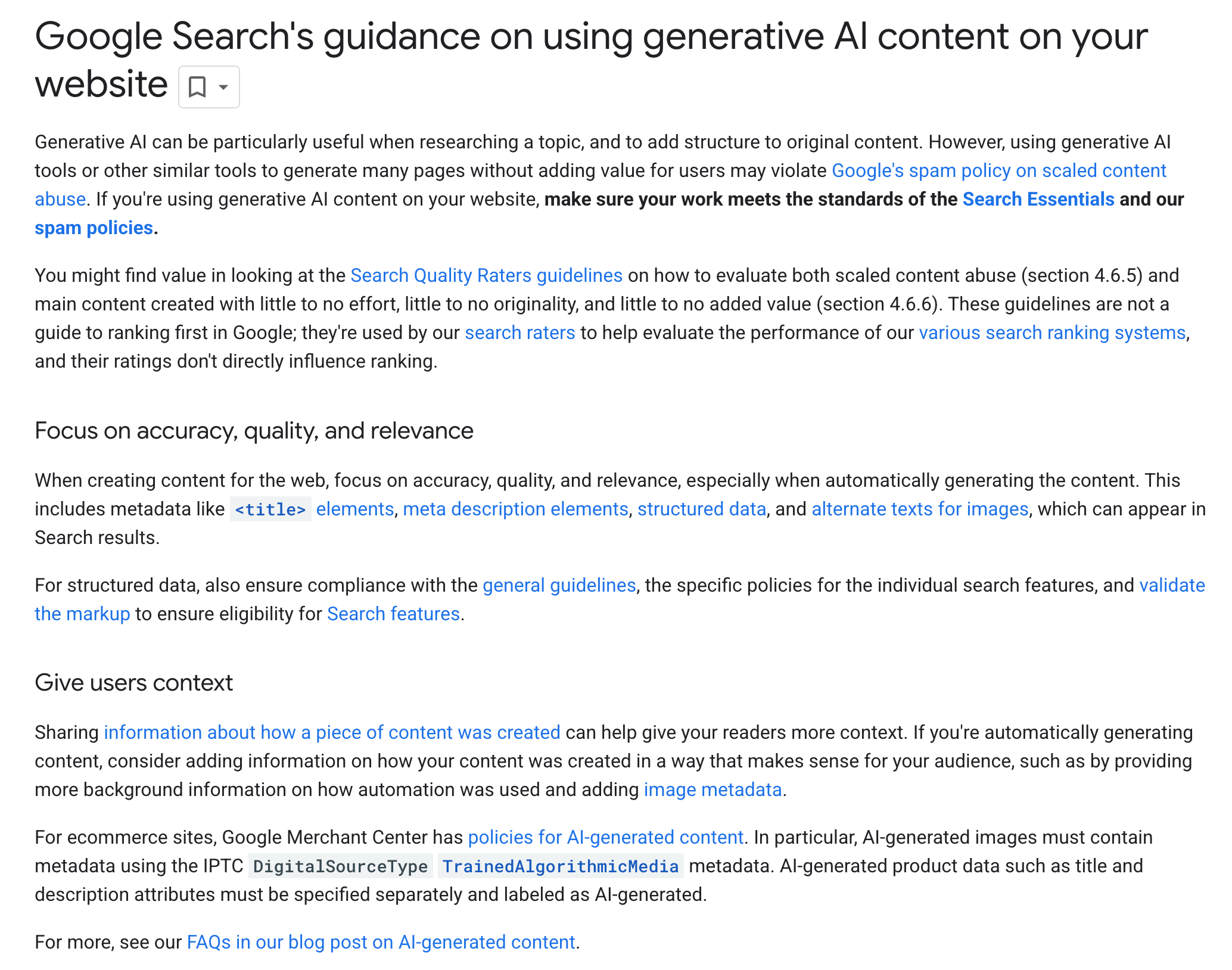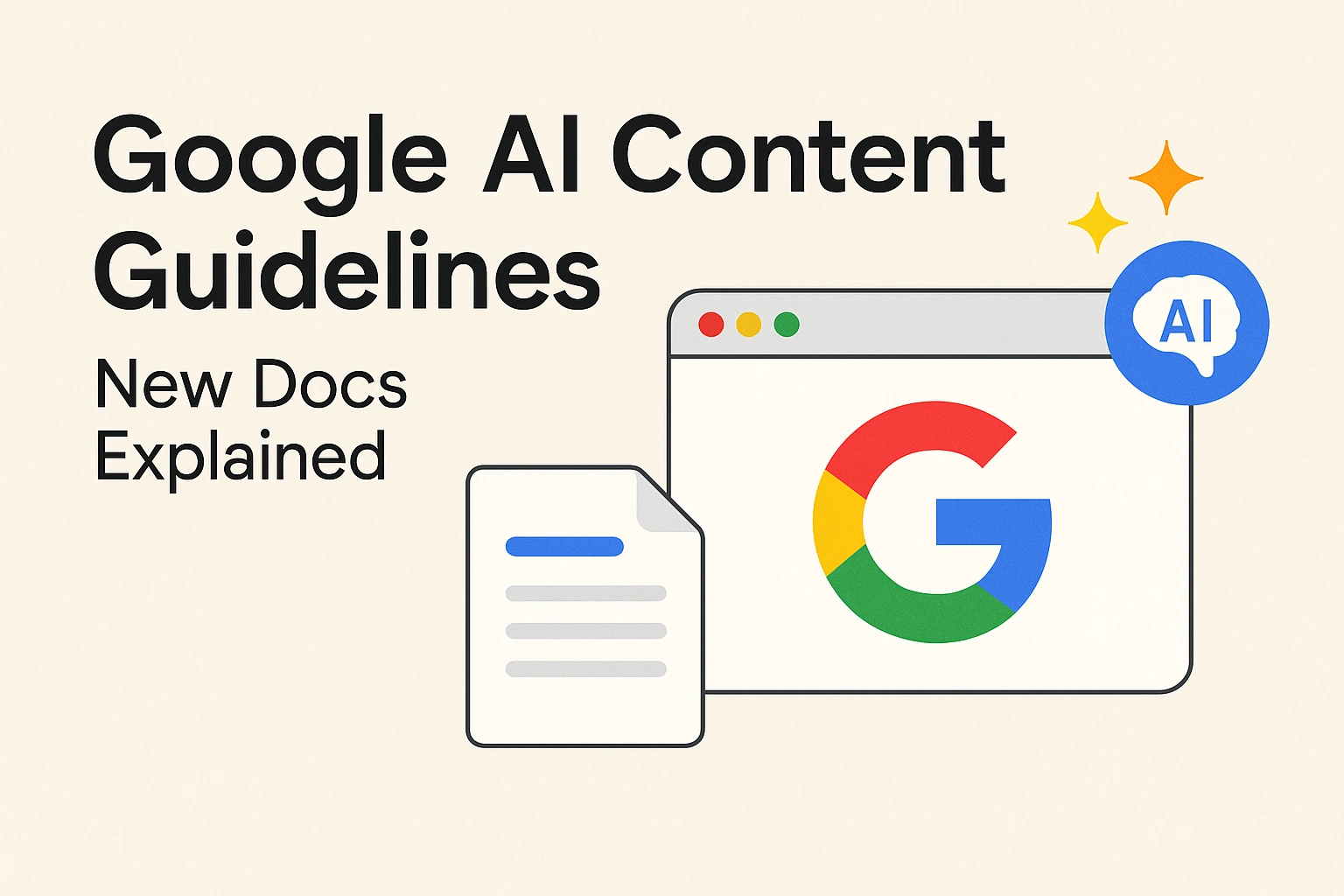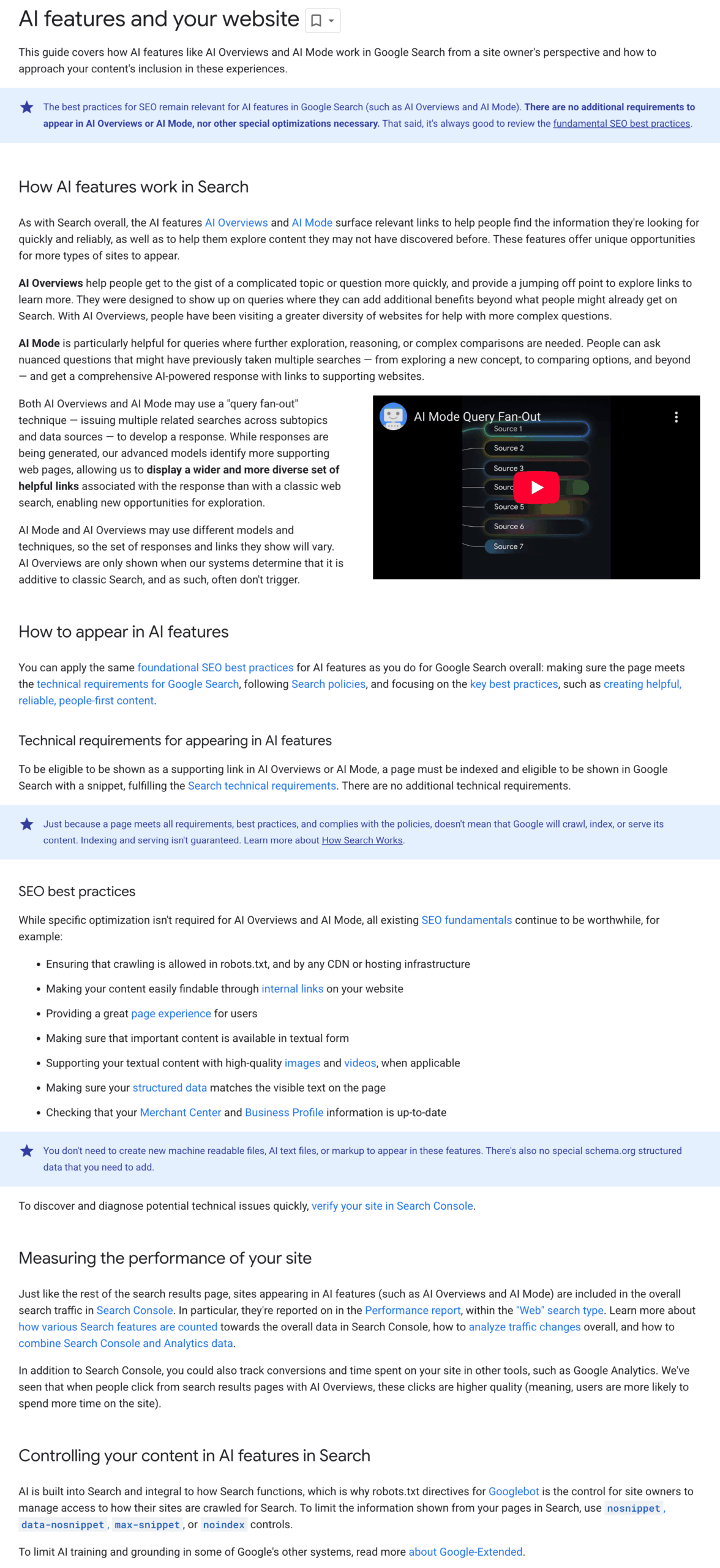Google AI Content Guidelines: New Docs Explained
Google has published two new official papers detailing their stance on AI use in website content and how AI features engage with your site. These changes serve to demystify the Google AI content guidelines, which are increasingly vital to master for website owners, SEO experts, and online marketers alike.
While these pages do not establish new rules or algorithmic changes, their structured nature better explains how Google believes webmasters can responsibly use AI-created content and optimize for AI-powered features in search. Watching these pages change over time may also provide us with hints about how Google AI content guidelines evolve as web publishing becomes increasingly featureful through AI solutions.
What the New Docs Cover
The first paper, “Search’s Guidance on AI-Generated Content,” highlights that AI content isn’t technically prohibited by Google policy. According to the Google AI content guidelines, what matters is whether or not the content is useful and relevant and in compliance with Google’s overall quality guidelines — especially those provided in their Search Essentials documentation.

Google algorithms evaluate content based on purpose and value to users. If content is spammy, low quality, and produced by AI tools for sole deception of rankings, it will fall under spam policies and can be penalized. However, a high-quality content created through the assistance of AI tools, when evaluated and edited by humans, is acceptable and even encouraged if it adds genuine value to the reader.
The article focuses on the importance of content that demonstrates E-E-A-T — Experience, Expertise, Authoritativeness, and Trustworthiness. Content creators should also be transparent about when AI is used, especially in its impacts on decision-making or user trust.
AI Features and Your Website
The second paper focuses on how AI features in search relate to websites. This is especially relevant given the increasing use of AI-enhanced search features such as Search Generative Experience (SGE). Such features pull information from web content in more contextual and dynamic ways.
To ensure your content continues to perform well against such AI features, the Google AI content guidelines recommend several technical best practices:
- Use structured data appropriately for all principal content types.
- Utilize meta tags in the right way to avoid blocking of crucial content.
- Optimize your site to be mobile-friendly and quick to load.
- Organize your site structure well and crawlable and indexable.
By doing these things, it makes it easier for AI tools to understand, summarize, and present your content better, which has a direct effect on how your pages are presented in rich results, featured snippets, and AI-driven answer boxes.
Why These Guidelines Matter
Although the pages summarize existing known policy, being official guidance pages is a major step towards Google’s AI content moderation policy. They are now guidelines that content teams and SEO professionals can refer to in order to get aligned.
Adherence to the Google AI content guidelines will prevent visibility issues in search, avoid devaluation of content, and strengthen the reputation of a domain. Search engines will continue to optimize ranking of AI-driven content with the growing usage of AI. Anticipate compliance will ensure long-term performance and user trust.
Misconceptions Regarding AI Content
It’s a popular myth that AI content is automatically penalized. Not at all. Google does not penalize AI content; instead, it penalizes content that violates its spam policy — whether generated by a human or AI.
Another misconception is that AI can entirely replace human oversight. The Google AI content guidelines highlight the necessity of human editing, reviewing, and adding value. AI tools can assist with writing or summarizing, but publication decisions have to be made by someone familiar with your audience and SEO approach.
What You Should Do Now
Below are take-charge steps to get your site into alignment with the Google AI content guidelines.
- Audit existing AI content for quality, originality, and relevance.
- Include author bylines and add structured data to improve trust indicators.
- Fact-check AI content to ensure it does not misinform readers.
- Reveal AI use wherever necessary, especially in sensitive or advisory material.
- Track performance via Google Search Console for changes upon deployment.
Final Thoughts
Google’s AI content guidelines aren’t technical regulations so much as Google’s philosophy about how to bring AI responsibly into the web environment. These new releases reiterate that quality and openness matter more than the process of content creation.
For publishers, businesses, and content strategists employing AI tools, these guidelines provide a structure to innovate responsibly. Bookmark the official resources and refer back often, as Google may continue to evolve these suggestions as the search experience becomes even more AI-based.
Applying your SEO practices to the Google AI content guidelines serves to ensure that your site stays visible, compliant, and trusted in a changing digital world.
Stay Updated with Daily News— Click Here to Explore More


